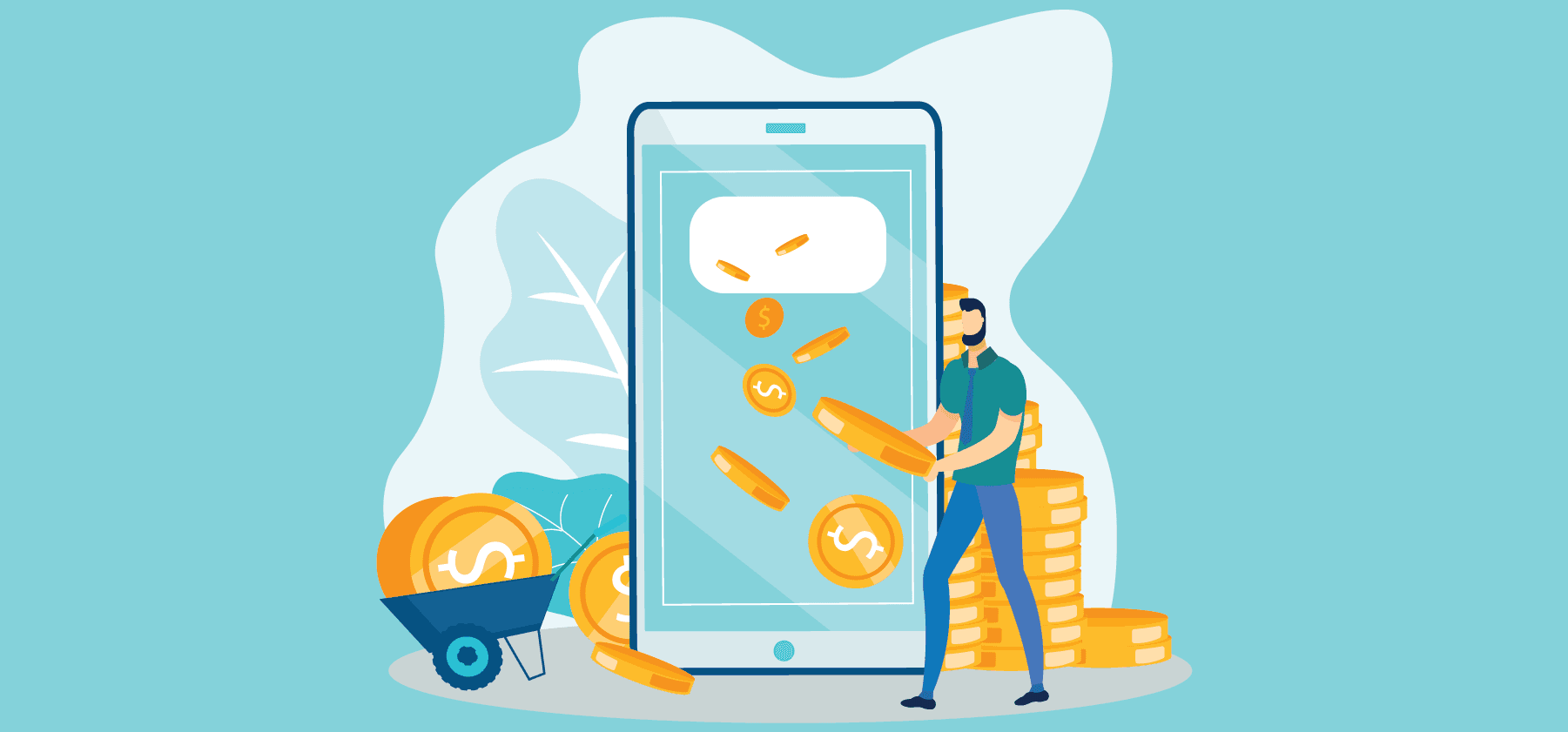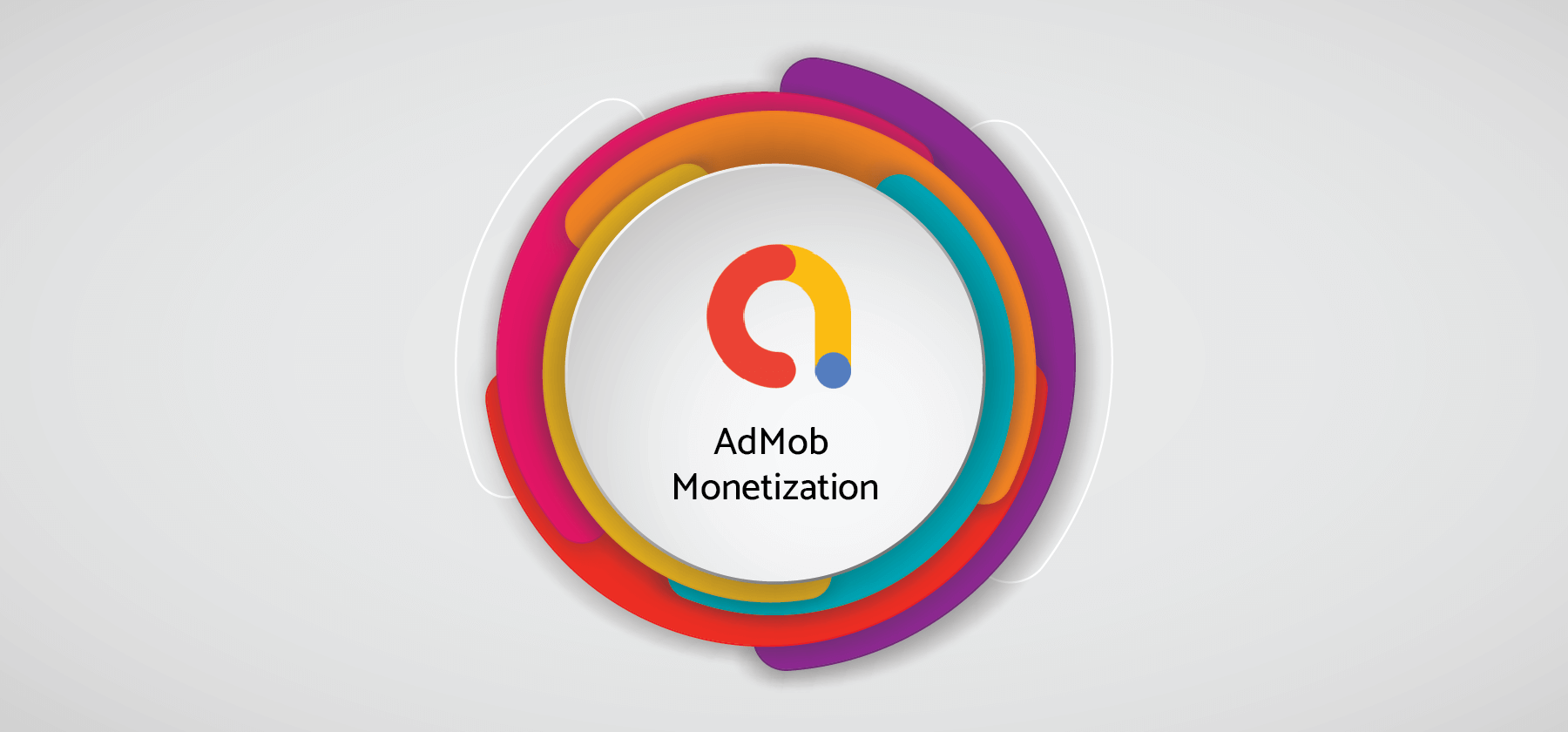Millions of mobile games are hosted every year on the App Store and Play Store, and like every other business owner, game developers expect to profit from these mobile games. The best solution that all of them zero in on is monetization.
Game monetization refers to the strategies that game developers use to make money from their gaming apps. There are many ways to do it. This blog post lists all the game monetization models that can be highly profitable.
7 top game monetization models
Have you observed that mobile game listings in the App Store and Play Store contain text like ‘Contains ads’ or ‘In-app purchases’? These indicate the game monetization models that are used within the app.
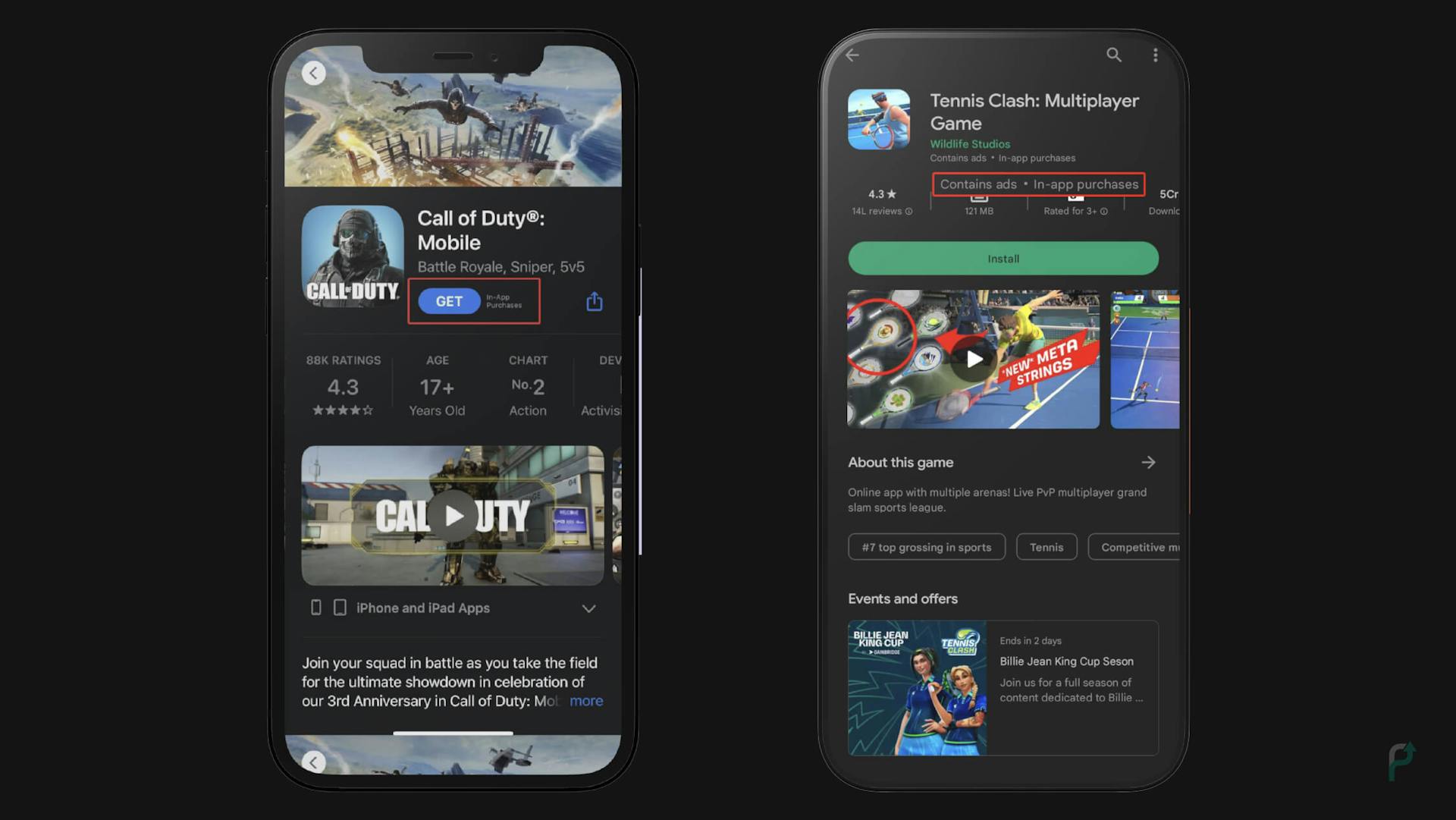 Game listings examples with ads
Game listings examples with adsEven though the games are free to play, game developers use these monetization models to make money. Also, it is a way for the users to know if they may have to watch ads while playing the game.
Apart from in-app ads and In-app purchases, there are several other game monetization models. Let’s learn about all of them in detail.
Are you looking to monetize your games?
-
In-app purchases
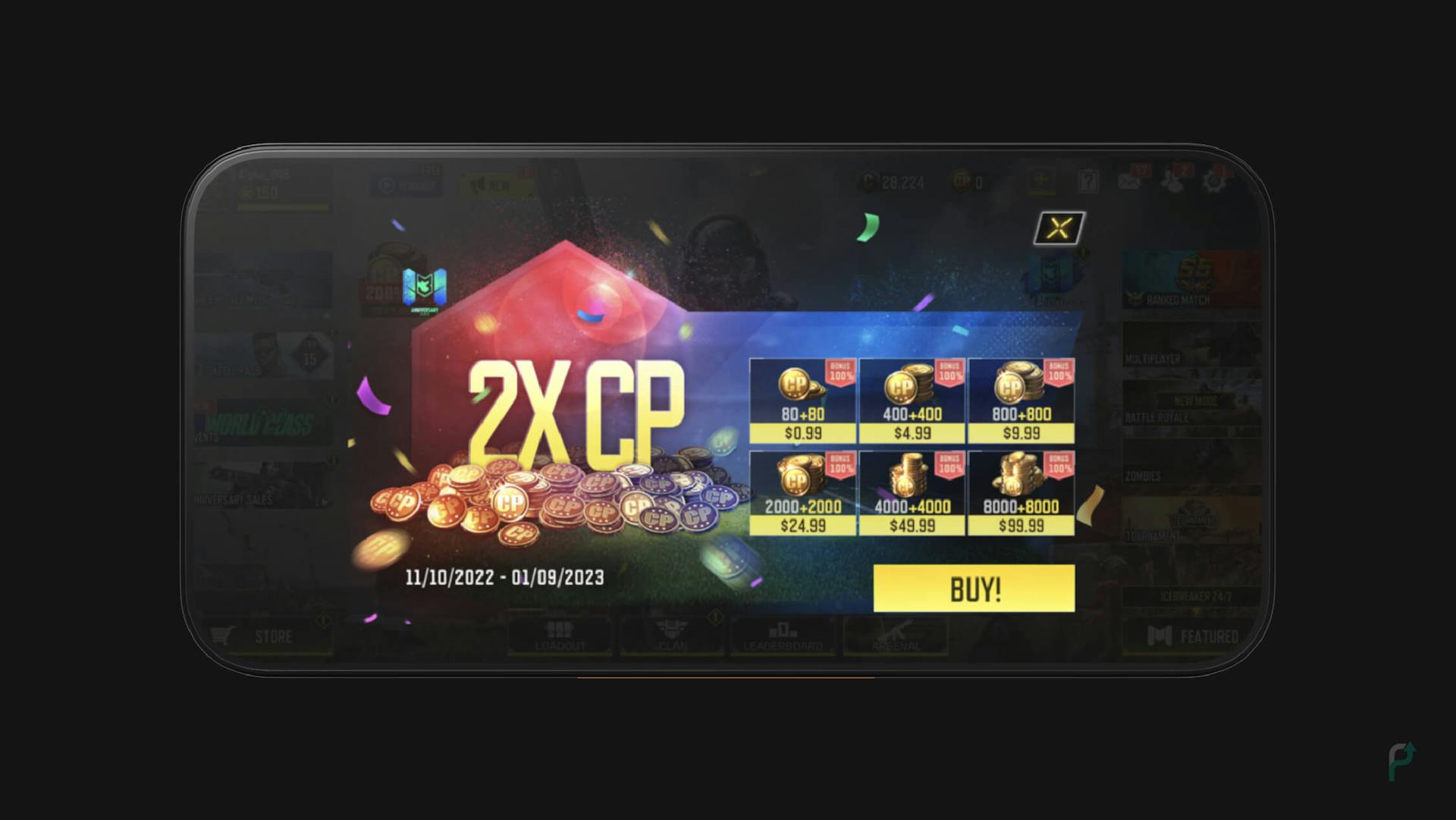 In-app purchase example
In-app purchase exampleAlthough optional, In-app purchases or IAP is a game monetization model that requires the users to buy items within the game using real money.
Items available for In-app purchases may be features, levels, coins, tokens, lives, and other in-game resources that a player can buy using their credit card. The right way to incorporate IAP in a game is to strategically place them where a player might need them the most.
For example, in situations where the player is unable to clear a level, the game can offer them an in-app purchase that will help them complete the level.
Essentially, this game monetization model must be able to offer a premium gaming experience to the players, something different from regular gameplay. This way, it can help the players differentiate between the ‘with IAP’ and ‘without IAP’ versions of the game.
How are in-app purchases made
Users can add their credit card details when creating an App Store or Google Play account. In this case, whenever a user clicks on an IAP resource, their card is charged automatically, which makes the purchase rather dangerously easy. If the credit card details are not entered during signup, users can manually enter them each time they want to purchase an item.
Types of in-app purchases
-
Consumables: Consumable IAPs are those that can be used up completely. They are limited resources that must be repurchased after being exhausted. For example, lives, currencies, etc.
-
Non-consumables: Non-consumable IAPs are a one-time purchase, those that can never be exhausted. New costumes, characters, and accessories are a few examples.
Some other IAP mechanisms include limited-time IAP, piggy banks, and loot boxes.
-
-
Freemium
The freemium game monetization model lets the users install and play the game for free. However, if the users want access to a premium version of the game, they must make some In-app purchases, also called microtransactions or in-game purchases. Thus, users must pay to access premium features that are otherwise not available or accessible.
-
In-game advertising
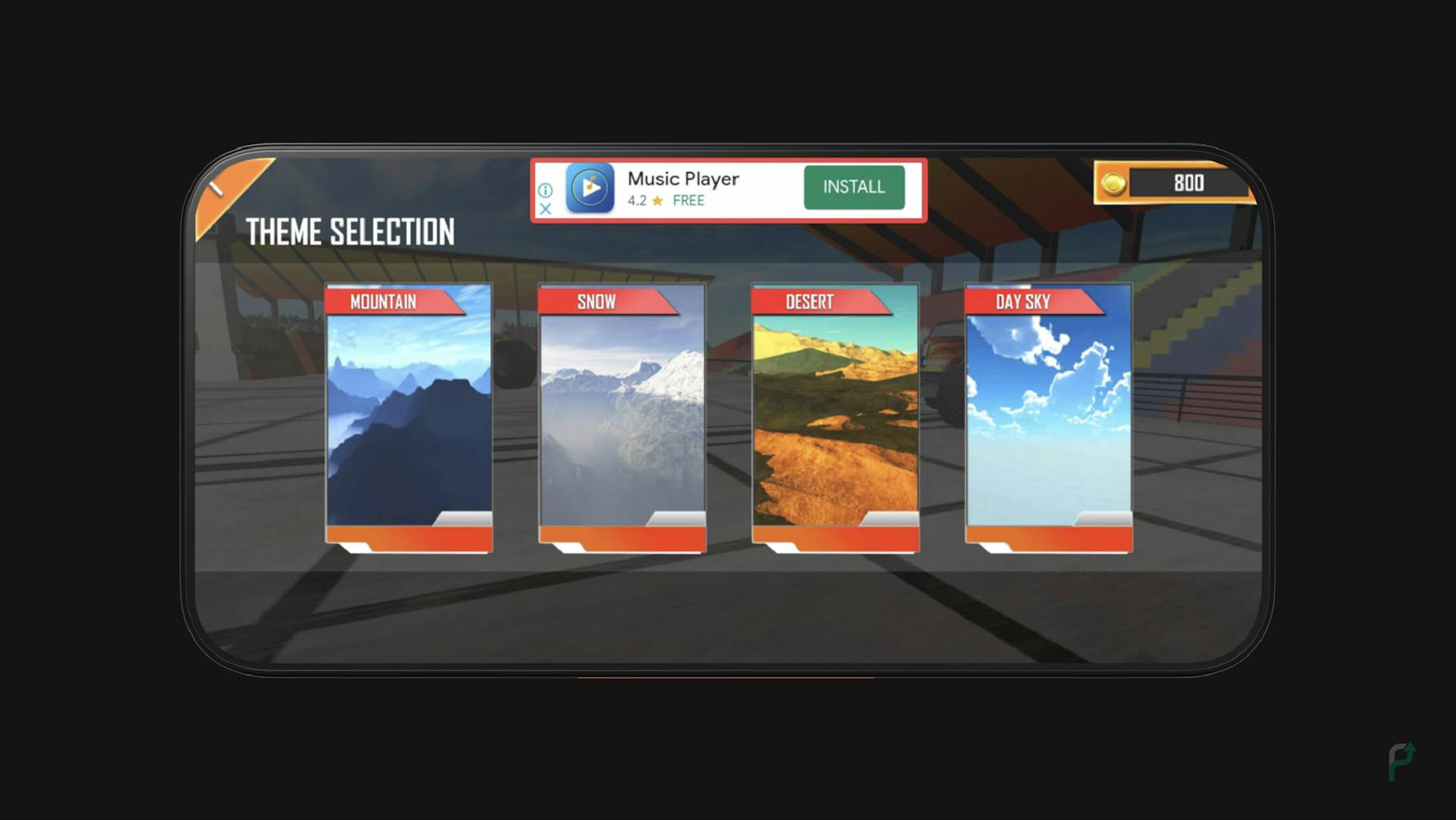 In-app advertising example
In-app advertising exampleIn-game advertising is a game monetization model involving adverts from different brands or advertisers. This game monetization model connects game developers with advertisers who are interested in advertising their products. Advertisers must pay a certain fee to show their ad on the game’s ad inventory. The income that comes from in-app advertising is called ad revenue.
Developments can choose different types of ad formats to show ads. Some of the popular ones for in-game advertising are listed below.
Popular in-game advertising ad formats
-
Interstitial ads
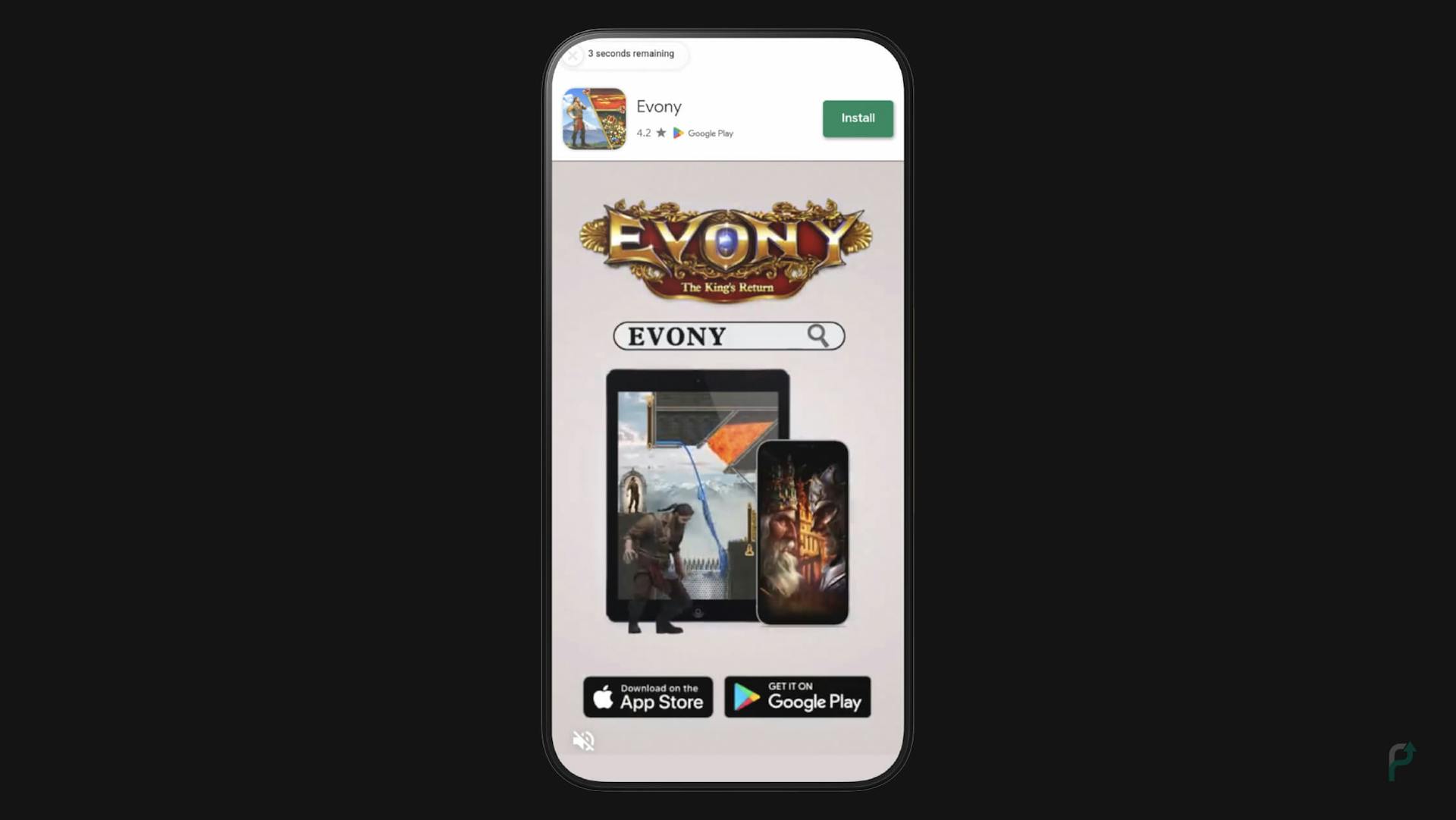 Interstitial ads example
Interstitial ads exampleThese are full-screen ads shown between natural pauses in gameplay, such as between different levels. Incorporating interstitial ads can be highly beneficial as they serve the purpose without interrupting the user’s gaming experience.
-
Native banner ads
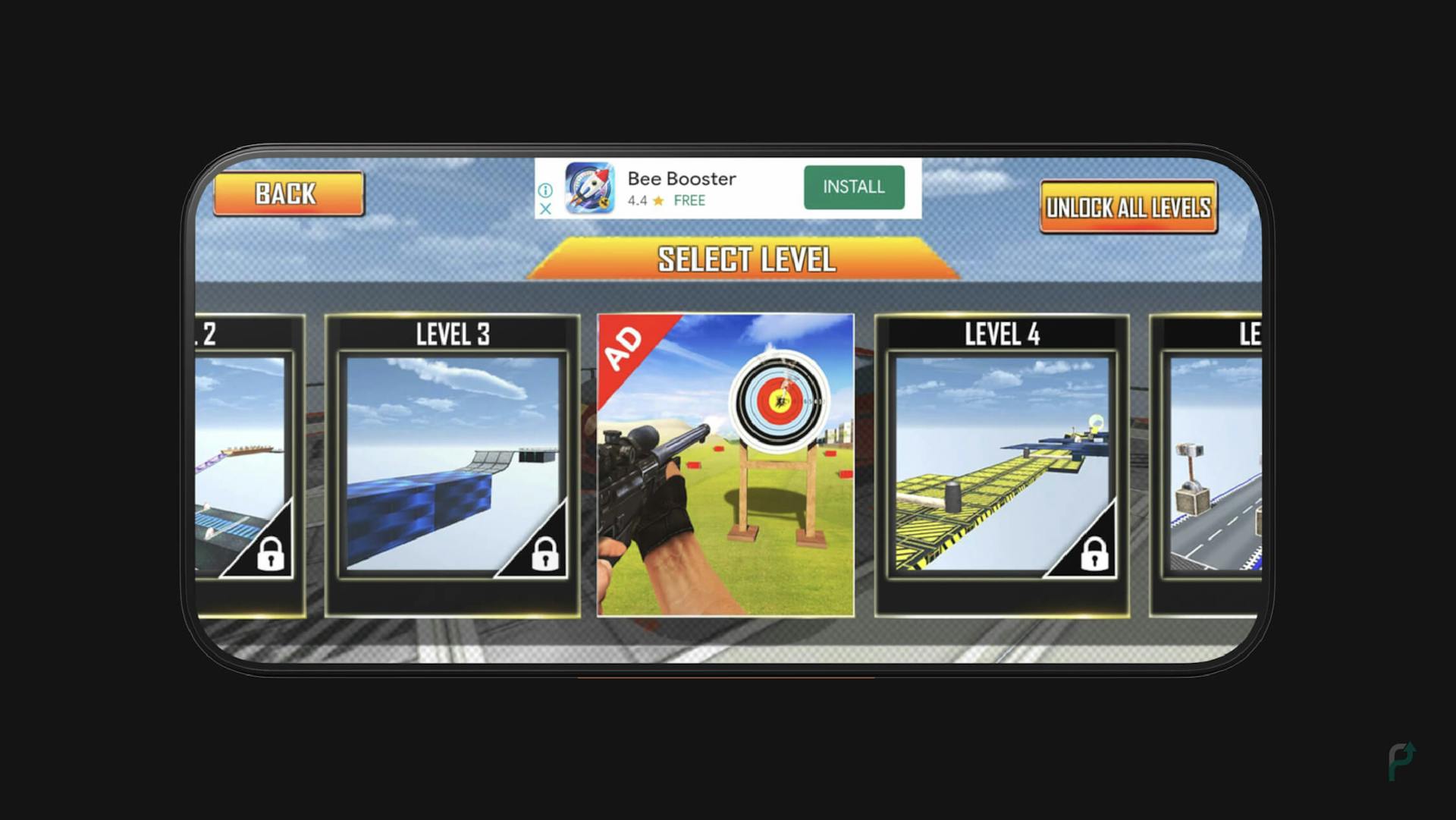 Native banner ads example
Native banner ads exampleThese ads are similar to the traditional banners in appearance, but they are less obtrusive because they are disguised as in-game elements. Thus, they do not come in the way of a smooth gaming experience. However, they do come with an indication that they are ads to avoid tricking the users into clicking them unintentionally.
Infuse your game with the immersive experience of Native Ads.
-
Playable ads
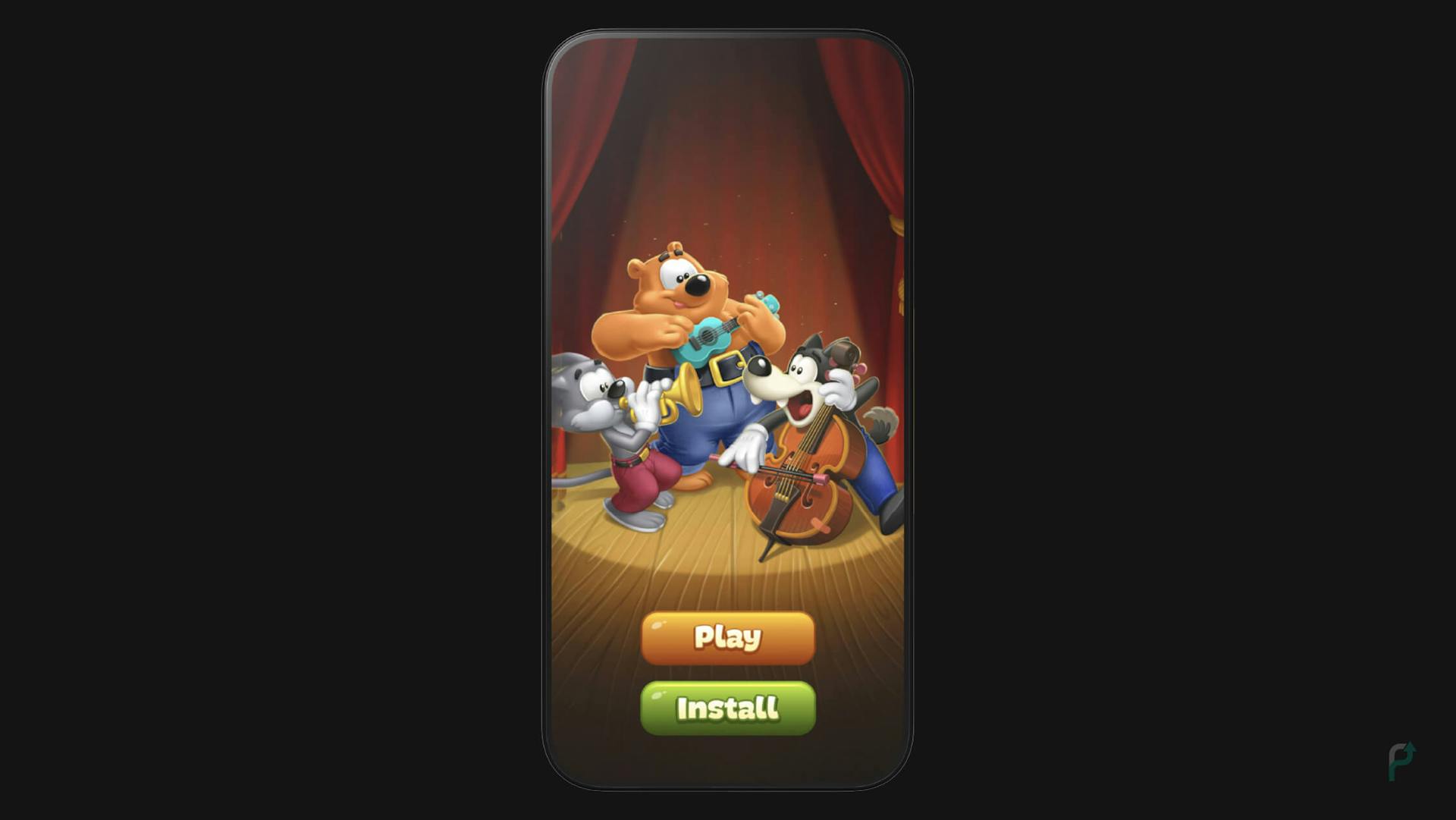 Playable ads example
Playable ads examplePlayable ads are one of the most popular game monetization models, falling under in-app advertising. They are interactive video ads used especially by game advertisers who want to offer a preview of their game to the users before they decide to download it.
-
Rewarded video ads
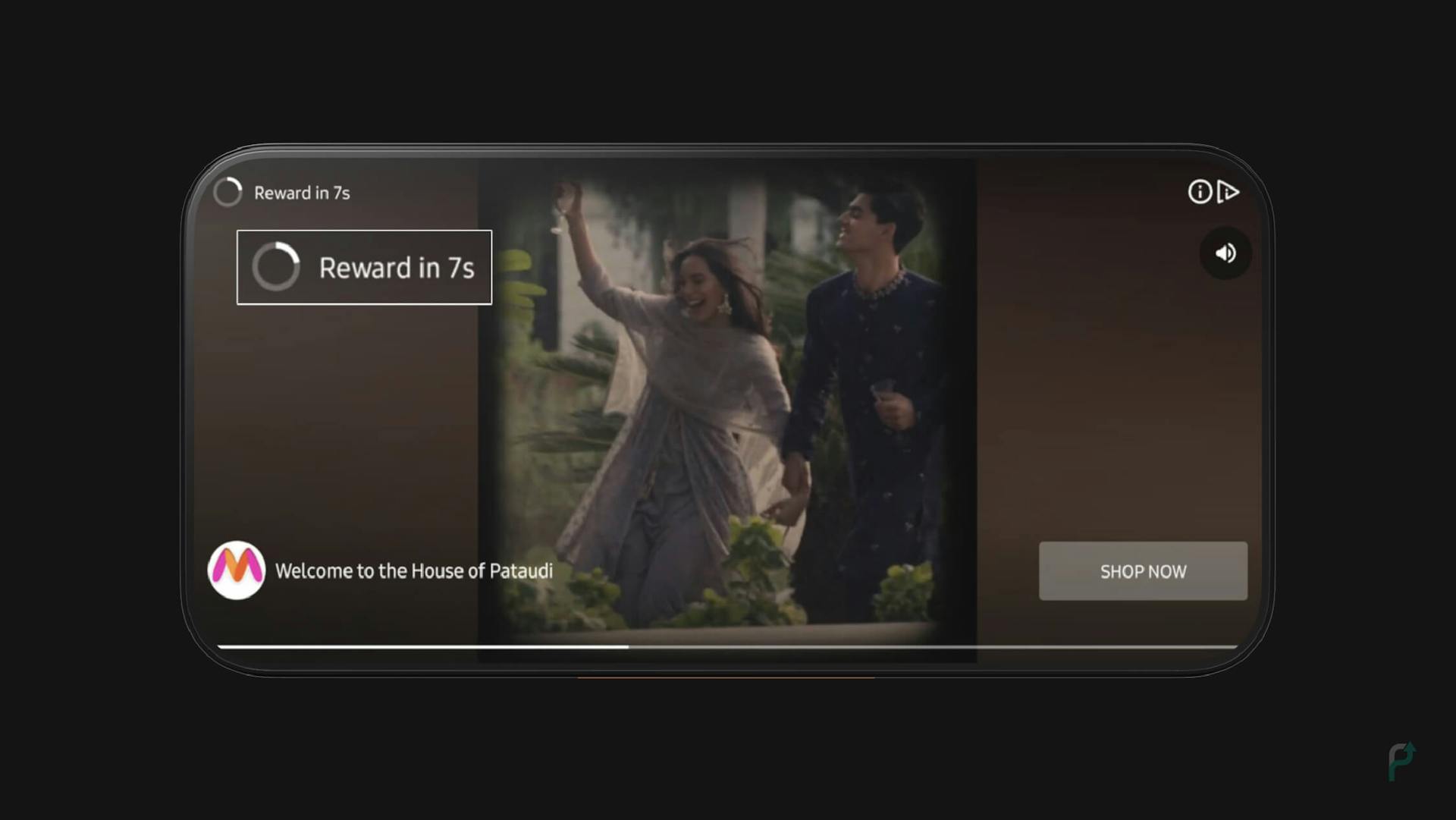 Rewarded video ads example
Rewarded video ads exampleThese ads reward the users with a gaming resource such as extra lives, more chances, in-game currency, etc., in exchange for watching a video.
-
Expandable ads
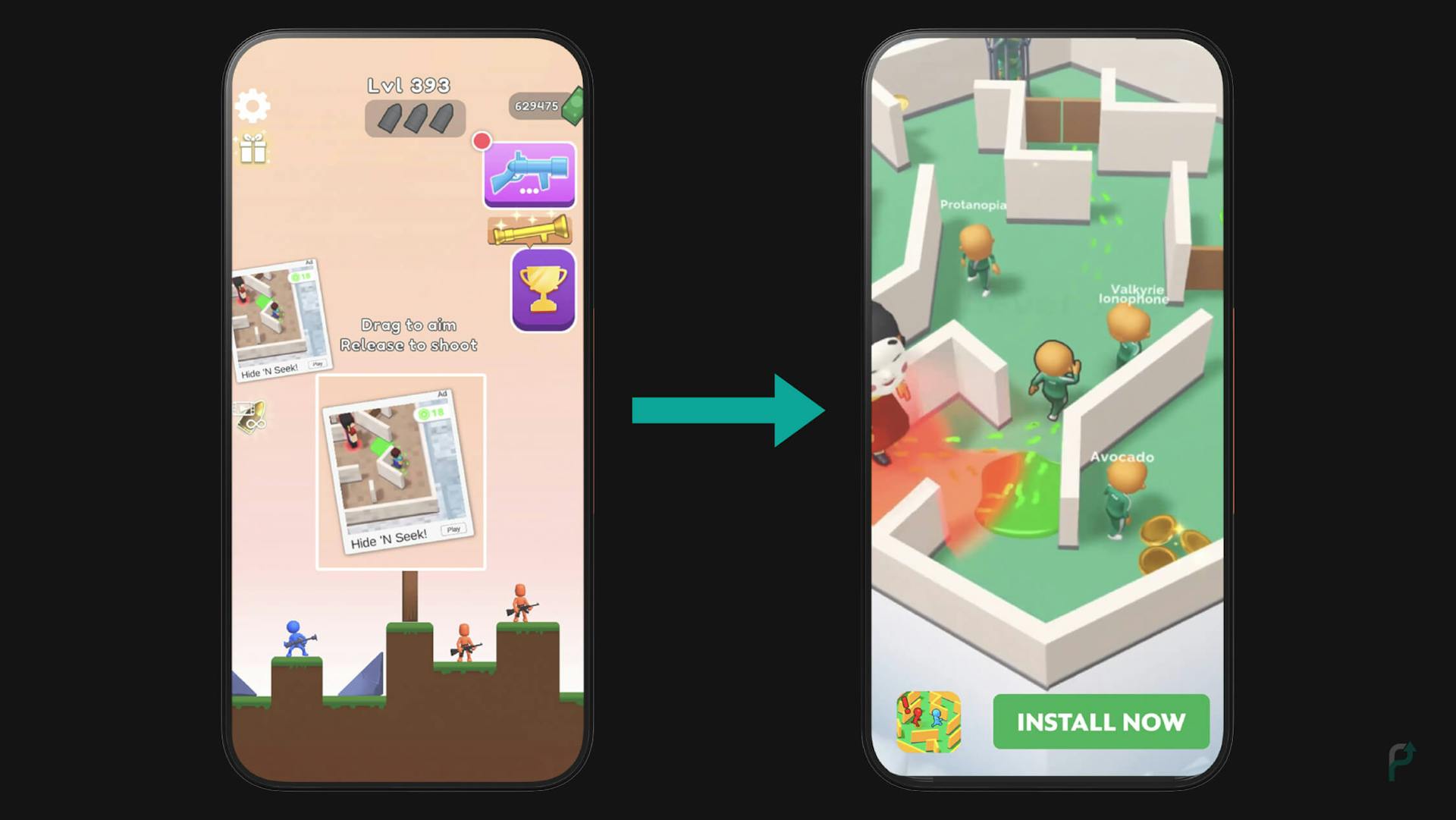 Expandable ads example
Expandable ads exampleExpandable ads are often small components on the game UI that expand when a user clicks them. Users do not love these ads because they might appear interruptive if clicked accidentally. Also, they cover the screen when they expand.
-
Offerwall
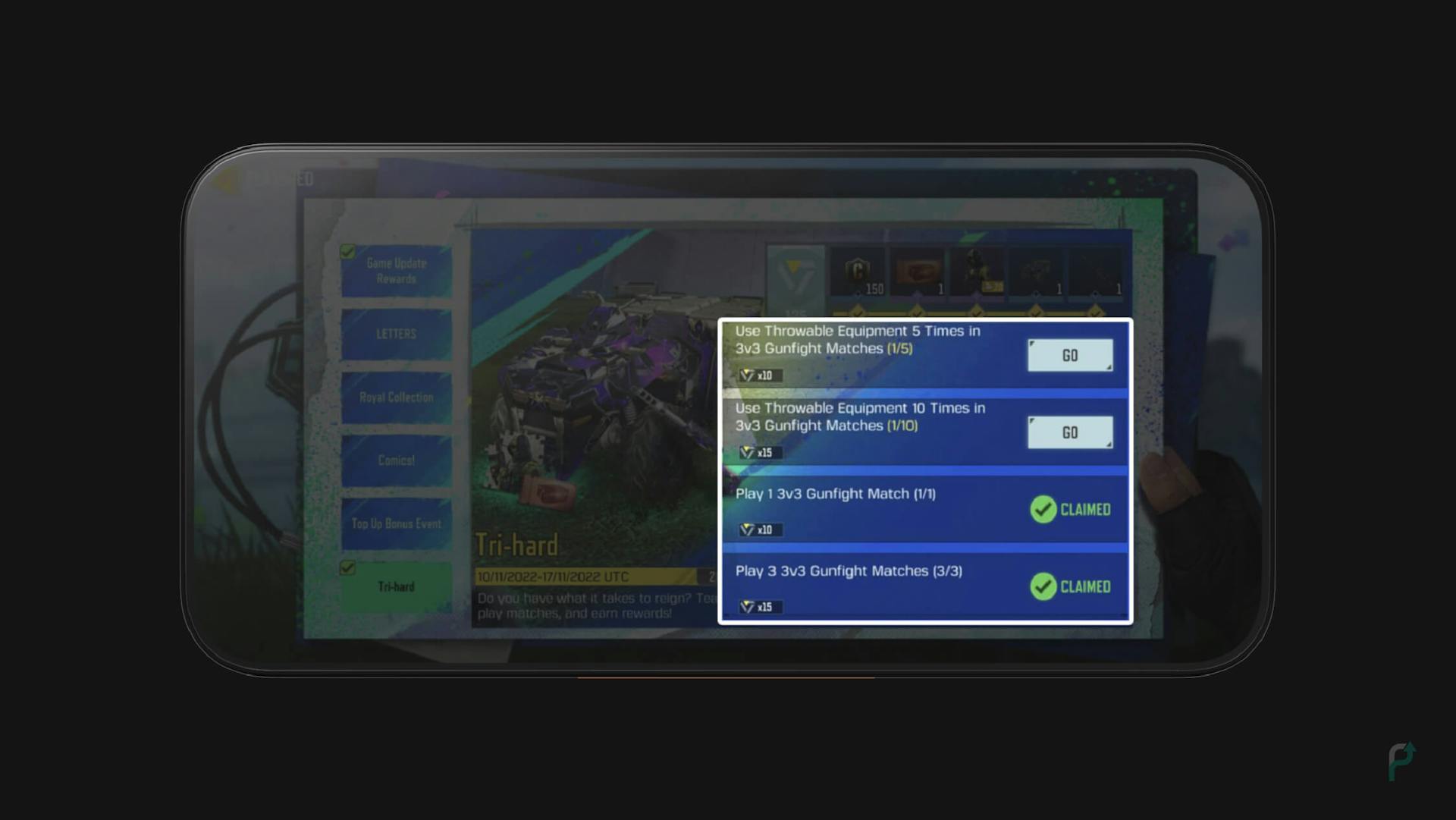 Offerwall ads example
Offerwall ads exampleOfferwall is a store-like section in a game that provides the users with in-app rewards in exchange for completing the ‘offers’ listed. Filling out a survey, registering a username, or making an in-app purchase could be some examples of the offers in an offerwall ads. These are particularly popular in RPG, puzzle, lifestyle, and arcade games.
Monetize your non-paying users with Offerwall.
-
Advergaming
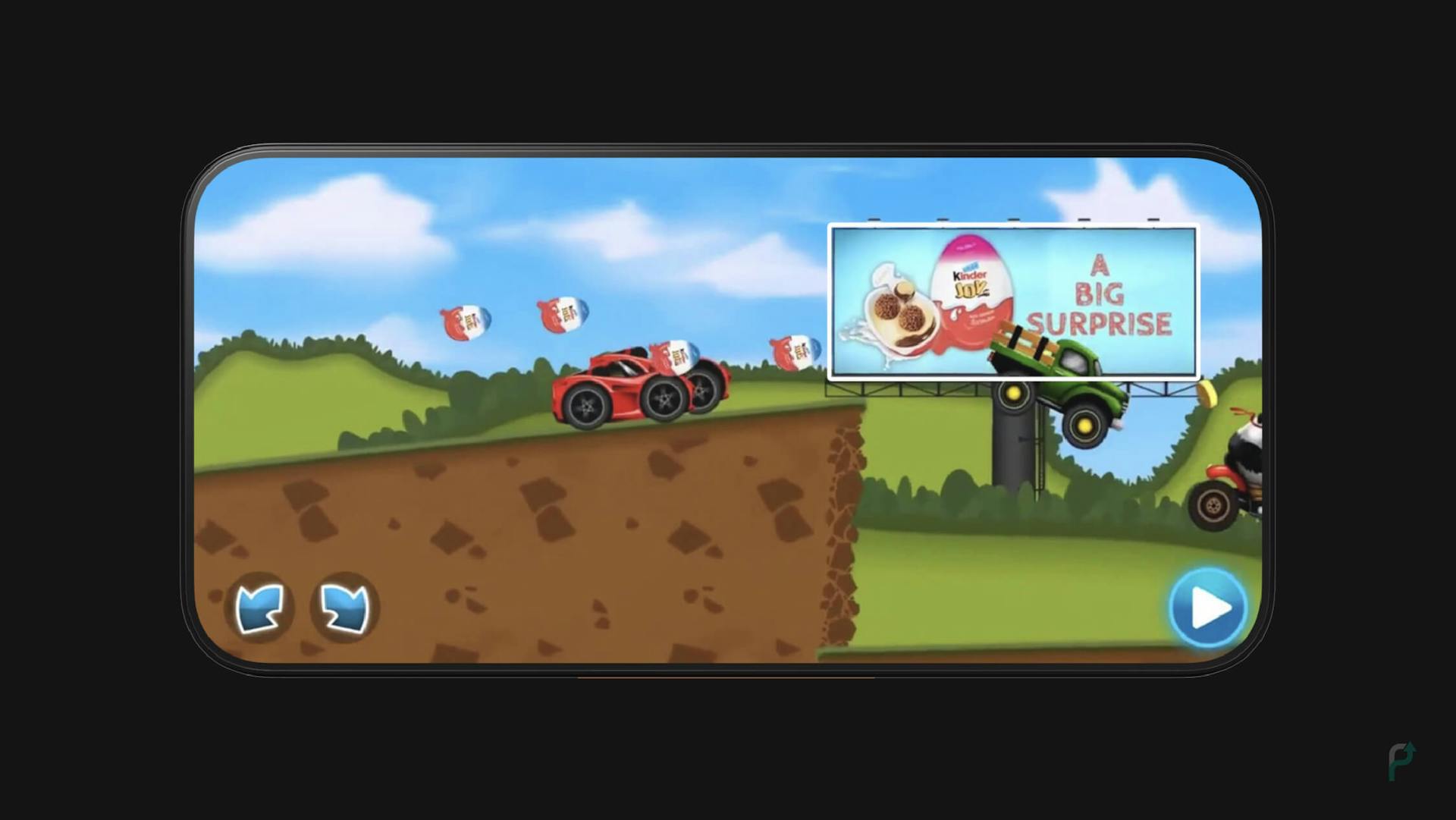 Advergaming example
Advergaming exampleAdvergaming is an advertising approach where brands integrate their products into the gameplay. This is an effective way to promote the brand because the players remember or become familiar with the brand name and may even spread the word about it.
-
In-app advertising practices to avoid
While in-app advertising is a lucrative game monetization model, it can backfire if not done correctly. Ads need to meet a standard to bring the desired revenue, and the ads that do not meet the standard are said to cause policy violations.
A policy violation occurs when the ads hamper the user experience in one or more ways.
Here are some scenarios that may cause policy violations:
- Ads covering more than 40% of the screen
- Ads disguised as app content
- Ads overlapping the app content
- Ads appearing abruptly, resulting in accidental clicks
- Mislabeled ads to misleading the app users into clicking a link or doing any other activity
- Ads that are resized or cropped
- More ads than app content
- Multiple ads on a single screen
- Recurring and unexpected interstitials
- Ads attempting to get attention explicitly in any way
-
-
Subscriptions
Subscriptions require the users to pay to access premium or additional content. This game monetization model is usually used as an extra or backup game monetization method.
Types of subscription models
-
Auto-renewable subscriptions: In mobile games, this game monetization model can be used to unlock different plans (for example, Basic, Intermediate, Expert) for a specific period. Auto-renewed subscriptions are renewed automatically after the specified period, and the user is notified before or after the renewal.
-
Non-renewing subscriptions: Unlike auto-renewed subscriptions, non-reviewing subscriptions require the users to renew the subscription by themselves at the end of every subscription cycle.
Popular subscription models
-
Battle pass
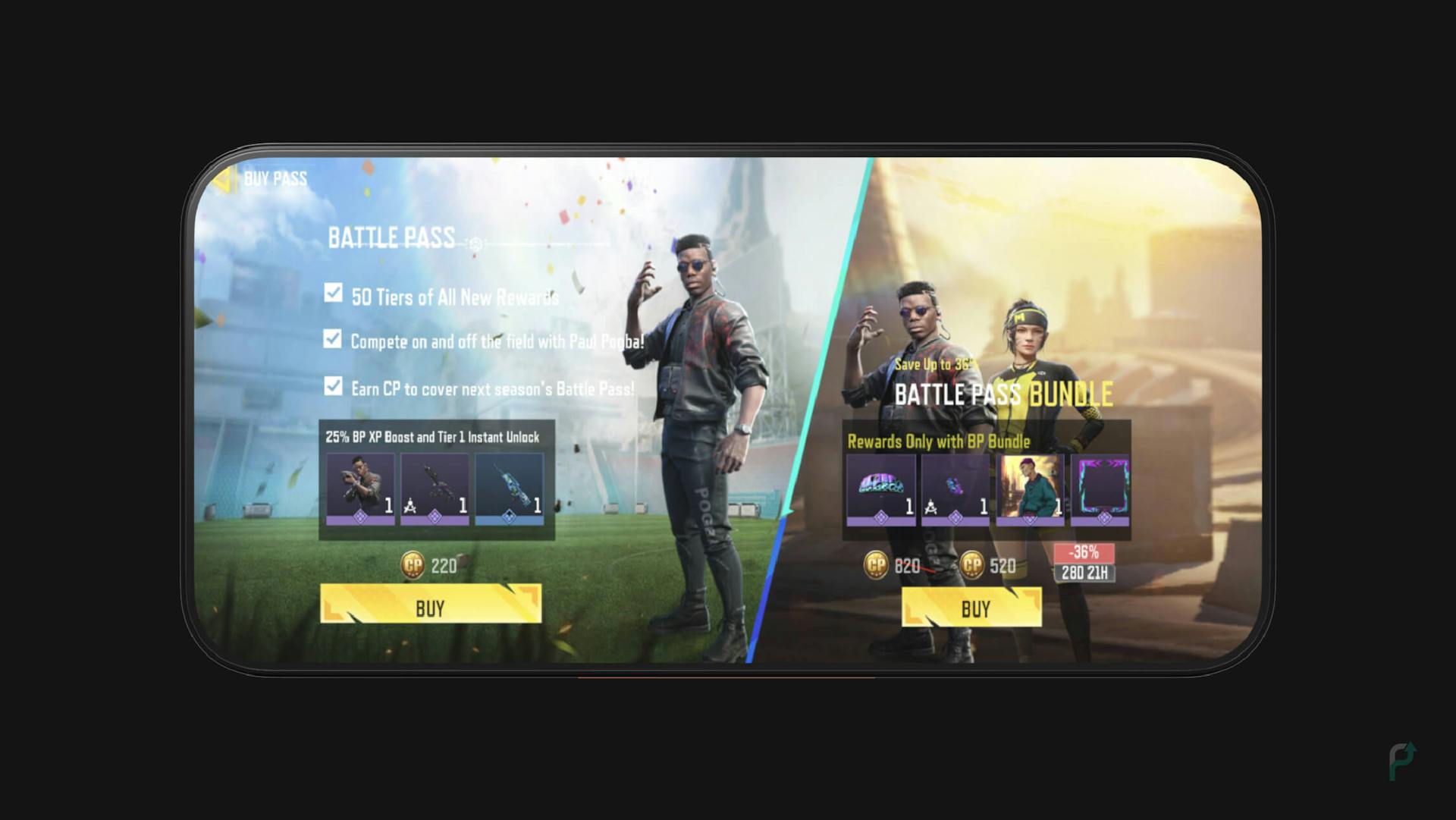 Battle Pass
Battle PassBattle pass subscriptions can be used by games of almost all categories. In this mobile game monetization model, the players are offered rewards on the condition that they play and progress through levels in a game. Battle pass subscriptions are available only for a limited period, usually, 15 or 30 days, which is referred to as the ‘battle pass season’. Additionally, these subscriptions are non-renewing and can be free or paid.
-
No ads
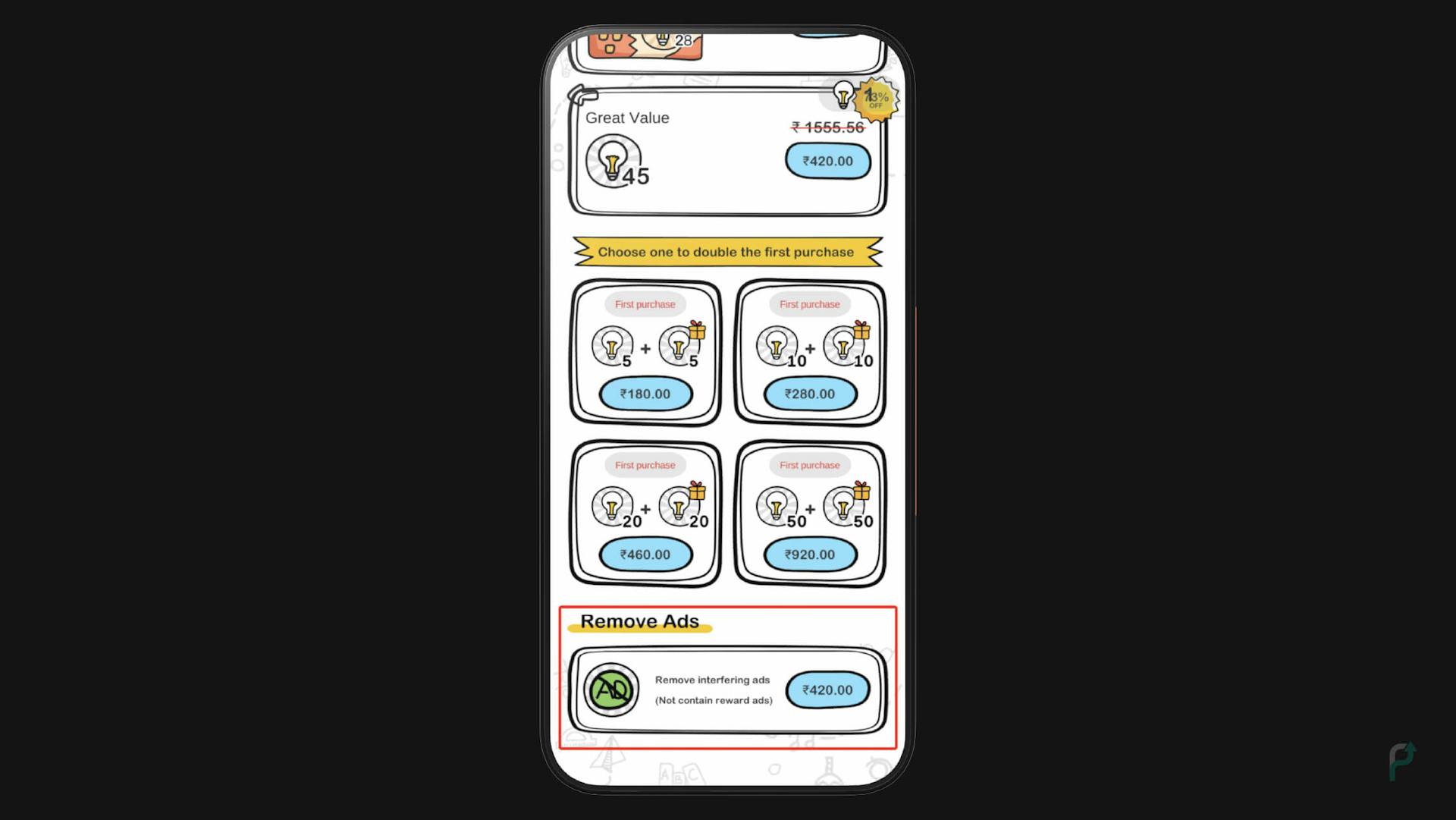 No ads
No ads‘No ads’, ‘Go ad-free’, or ‘Remove ads’ subscriptions allow game users to get rid of ads by paying an amount. These can be a one-time subscription that removes ads from the game forever or a per-month non-renewing subscription.
-
VIP
The idea behind VIP subscriptions is to make the users feel special or important by indulging them in an exclusive community with access to chats and forums. VIP users get exclusive benefits like daily rewards, no ads, etc., that are unavailable to other users.
-
-
Paid games
The traditional method of monetizing games is charging the users for downloading them. However, this game monetization model may not work in the present times because of the availability of millions of free games on the App Store and Play Store. Developers must make sure the game stands out from millions of other games to be able to monetize with the paid mobile game monetization strategy. Paid games accept a one-time payment from users and may also use other game monetization models on the side.
-
Meta layer monetization
Meta layer monetization is often a complementary game monetization model apart from the core monetization mechanism.
Now, what is a meta layer?
To make games more indulging to players with varied preferences, a meta layer is added to a game, something that is not necessarily the same as the core gameplay.
Casual games are often used as a meta layer to assist the players in the core gameplay. For example, users can play the casual game to get items that may help them progress in the main game.
Midcore games are used to monetize the meta layer by including In-app purchases. These games attract players who like different game categories. Depending on the impact of the meta layer on the core game, the players become payers, thus, monetizing the game.
Types of meta layer game monetization models
- Collectible meta: This meta layer game monetization model is widely used in slot games. It lets users collect stickers, accessories, characters, etc., and maintain a ‘collectible album’. The best thing is that collectible meta does not hamper the core gameplay.
- RPG meta: RPG meta involves introducing RPG elements like upgrading a character with equipment, accessories, powers, etc., for which the users are charged a fee. This game monetization model is popular in casual games because it evokes complexity.
- Virtual property meta: This involves decorating, customizing, or personalizing a virtual space or dressing up a fashion model and is mostly found in match-3 games.
- Narrative meta: Narrative meta involves a narration or a storyline, usually with twists. The game’s progress depends on the narrative, also building curiosity in the players about what might happen next. Narrative meta may also be combined with virtual property meta for a much better gaming experience.
Examples of games that use meta layer monetization
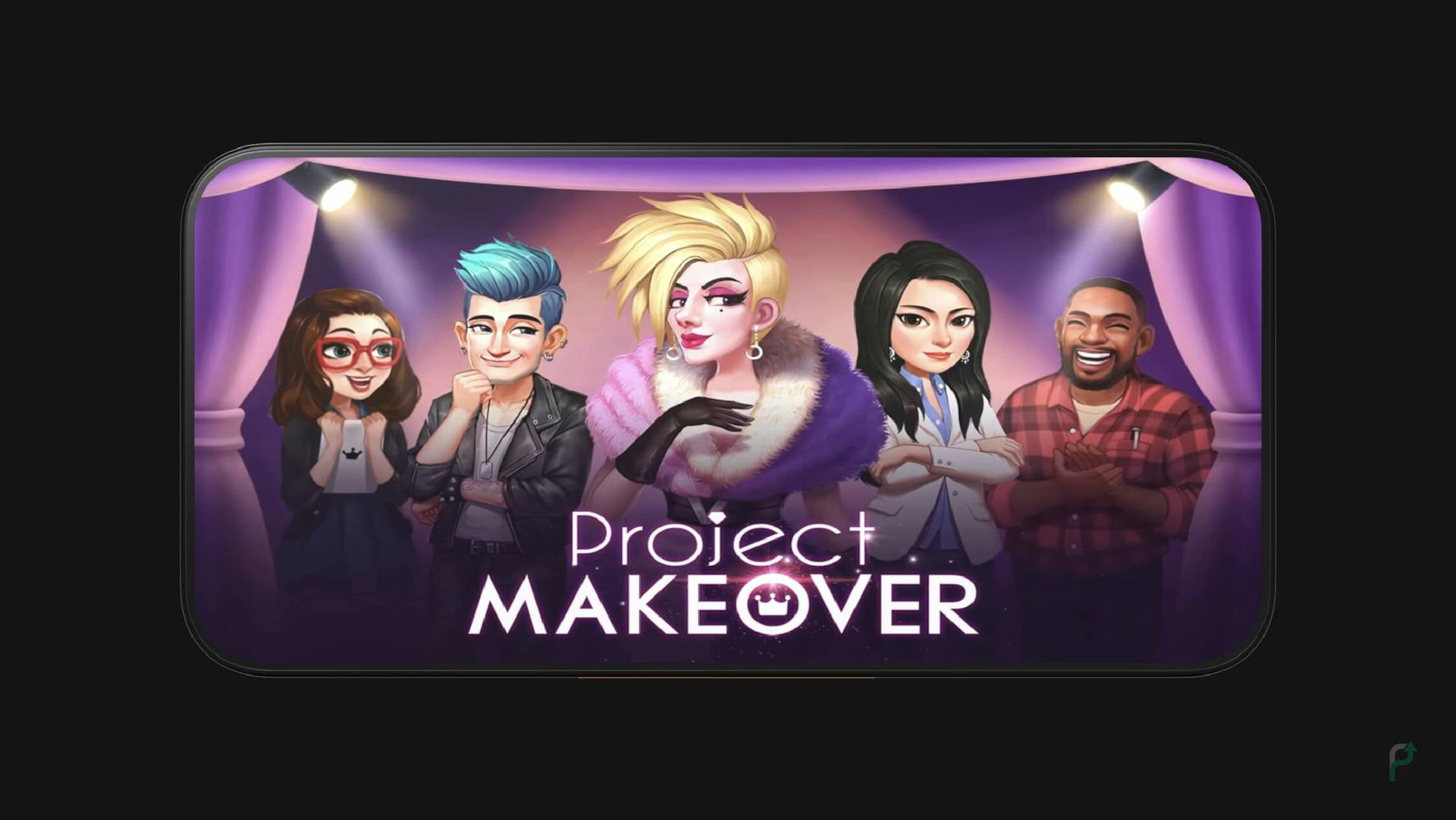 Project makeover
Project makeoverProject Makeover: A match-3 puzzle game that uses four different meta – Narrative, fashion, makeup, and decoration.
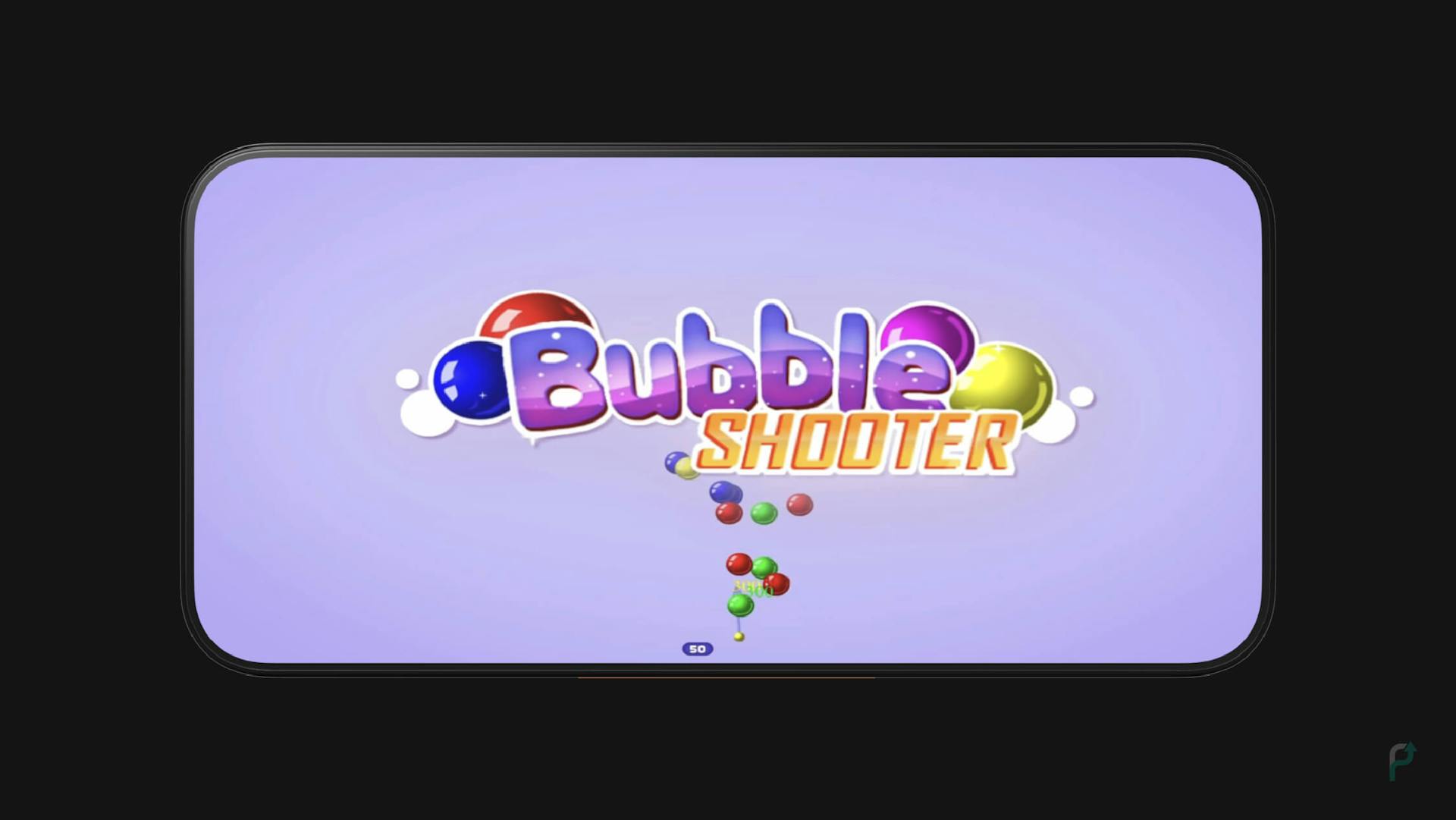 Bubble shooter
Bubble shooterBubble Shooter: A match-3 game that uses virtual property meta.
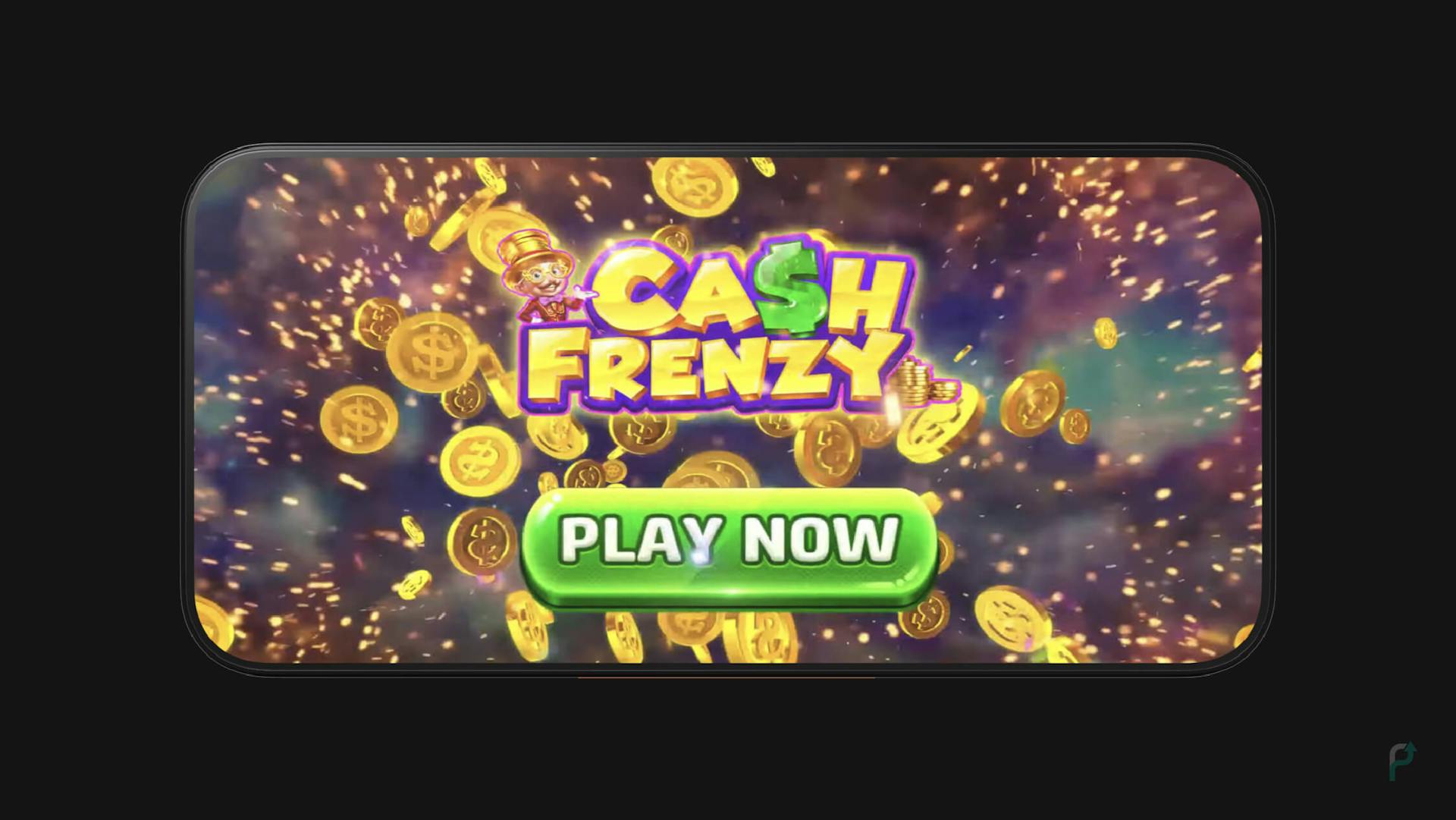 Cash frenzy
Cash frenzyCash Frenzy: A slot game that uses collectible meta.
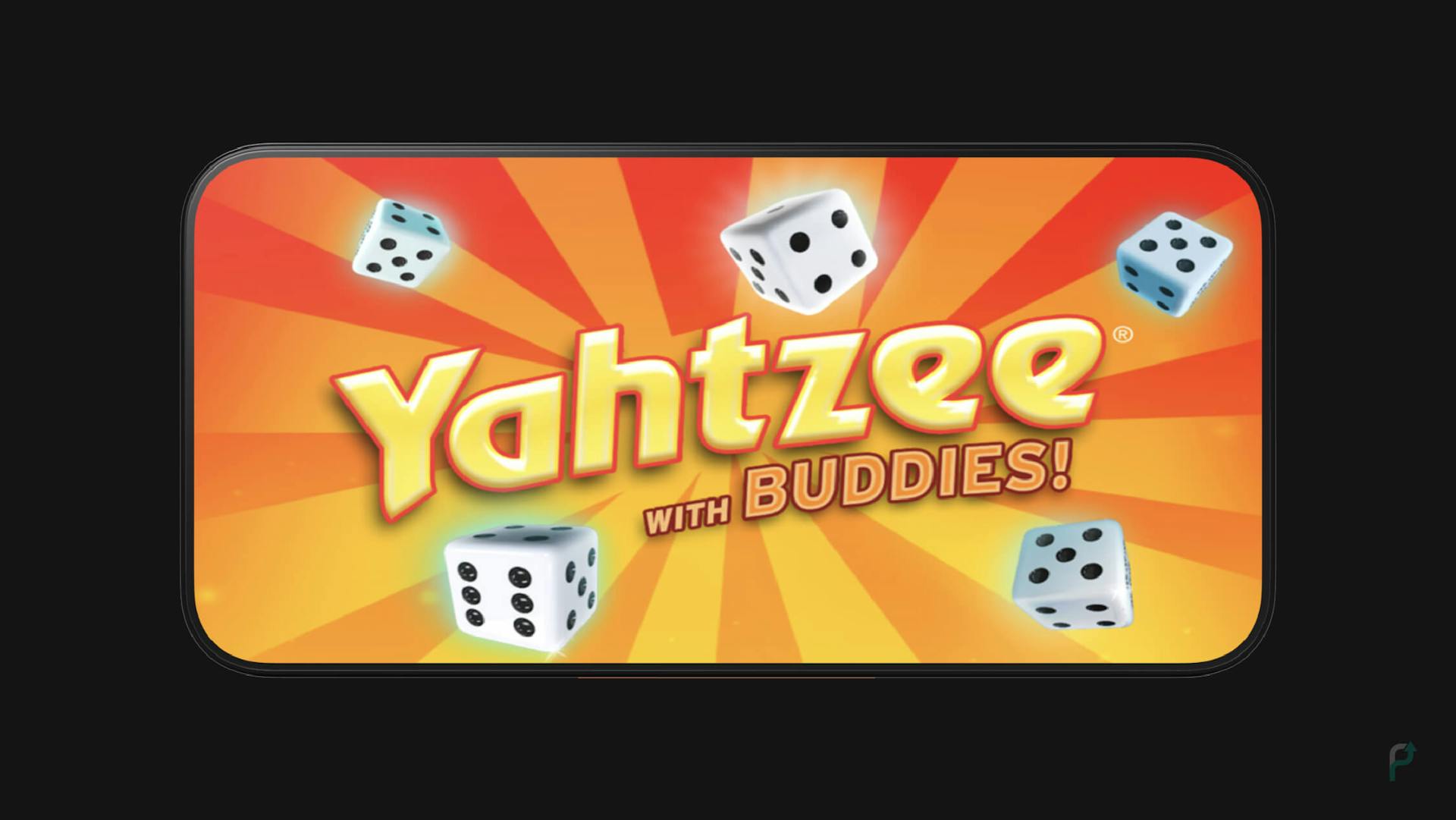 Yahtzee
YahtzeeYahtzee: A dice game that uses collectible meta.
-
Hybrid monetization
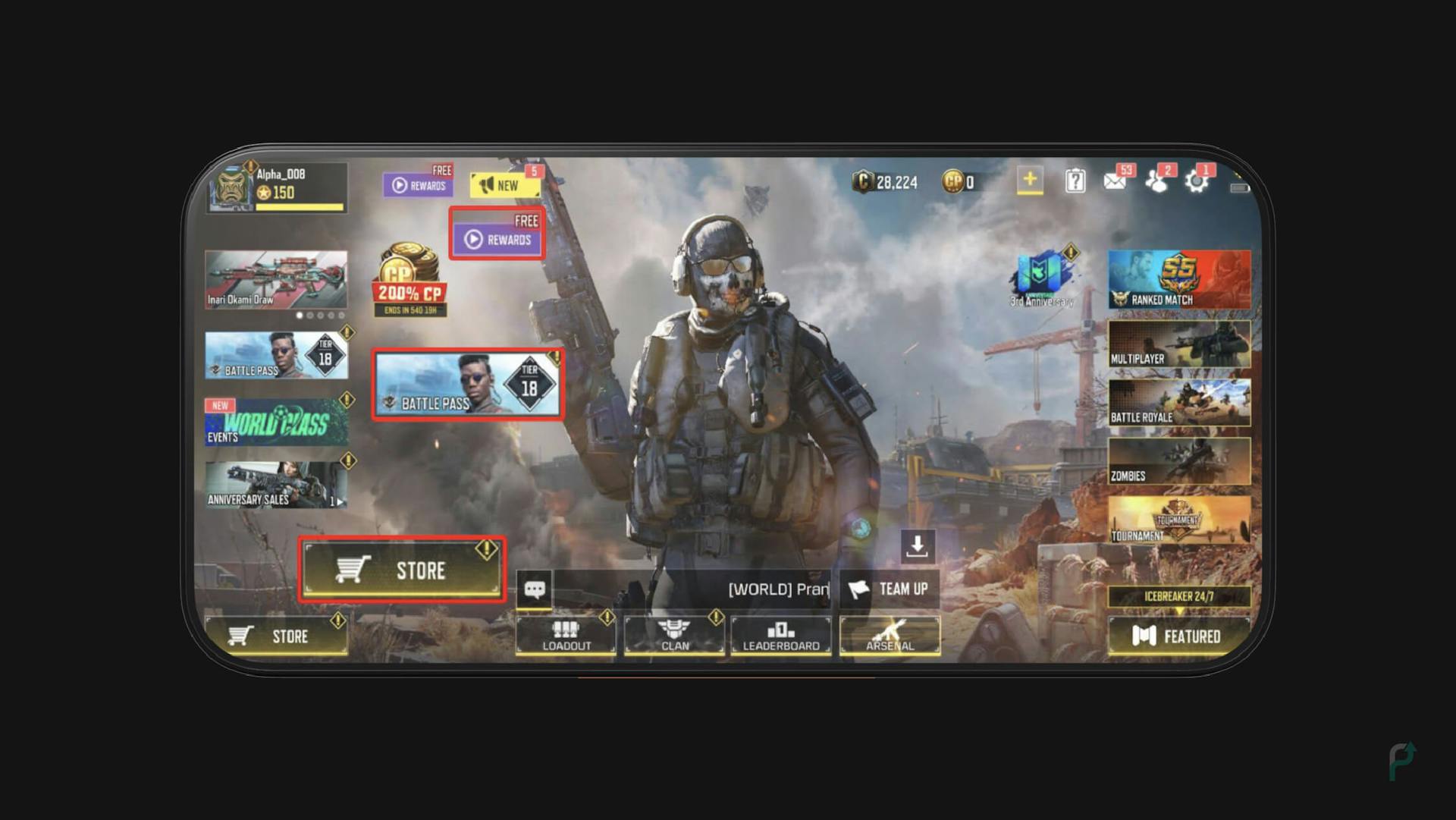 Hybrid monetization example
Hybrid monetization exampleThe ideology of ‘the more, the better’ holds when it comes to mobile game monetization models. Hybrid monetization, as it is called, is an extremely effective game monetization model where more than one monetization method listed above is used to drive revenue. It is a form of revenue diversification for mobile game businesses, where multiple income streams are put in place to generate revenue.
This game monetization model is effective because it benefits game developers while considering the users’ preferences. Some users might choose to watch rewarded video ads, while others may rather want to make an in-app purchase. Either way, it results in a positive outcome for both the developers and the users.
There are multiple ways to make money out of a gaming app. However, not all game monetization models may be profitable for all game categories. The best thing to do is mix it up. Try a hybrid monetization strategy and analyze the revenue that is generated from each one of the methods. After all, experiments lead to great discoveries!
The only ad platform built for developers by developers.
Contact us now for a product that fits your needs! It’s quick, simple and easy.


